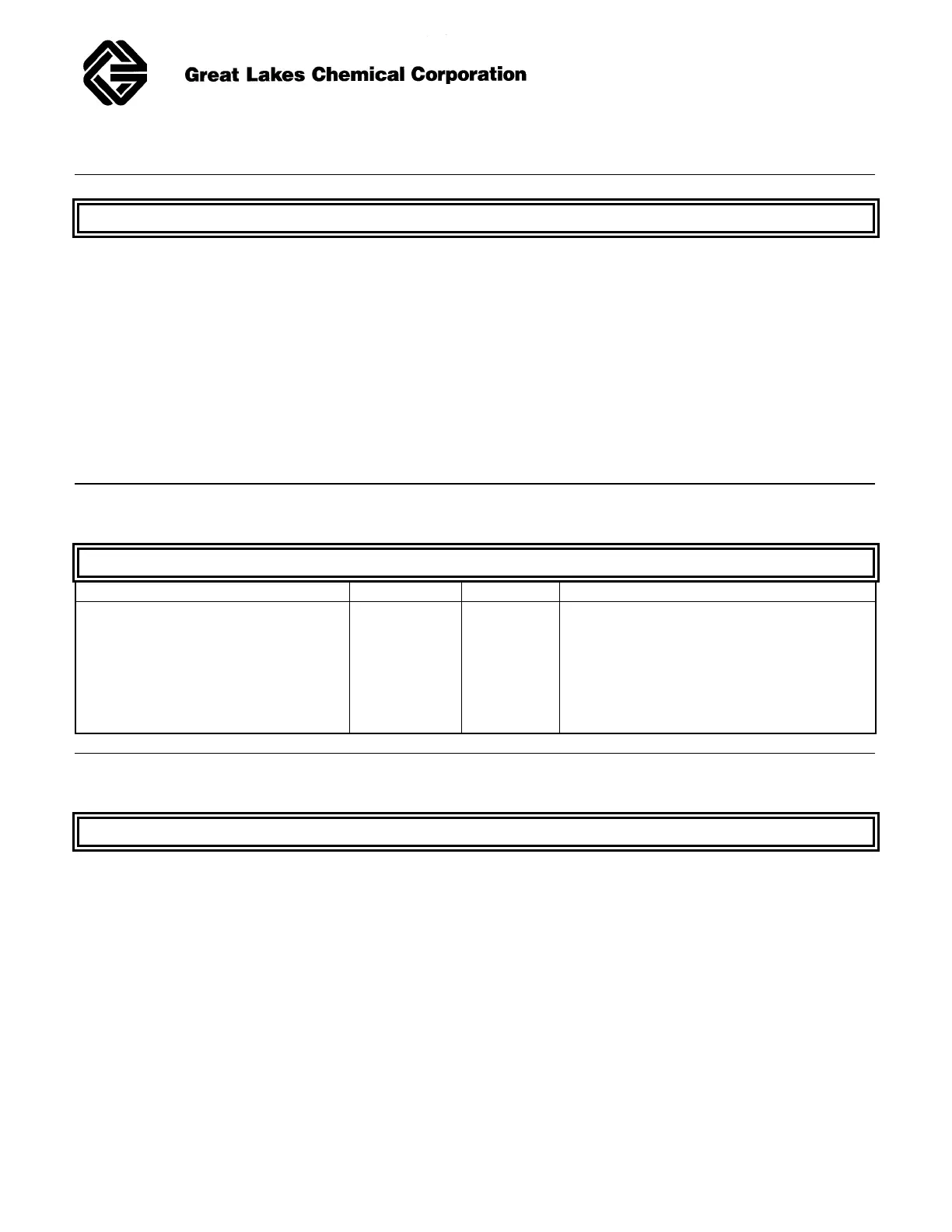MATERIAL SAFETY
DATA SHEET
MSDS Number:
00057
Effective Date:
04/20/2001
Product Name: FM-200 Page:
1 of 7
SECTION I - CHEMICAL PRODUCT AND COMPANY IDENTIFICATION
Product Name: FM-200
Manufacturer: Great Lakes Chemical Corporation
Address: P.O. Box 2200 City: West Lafayette
State: Indiana Zip: 47996-2200
Emergency Telephone Number: 1-800-949-5167
Information Telephone Number: 1-765-497-6100 Fax: 1-765-497-6123
Chemtrec Phone: 1-800-424-9300
Effective Date: 04/20/2001 Supercede Date: 4/7/98
MSDS Prepared By: Regulatory Affairs Department/Great Lakes Chemical Corporation
Synonyms: 1,1,1,2,3,3,3-Heptafluoropropane, 2H-Heptafluoropropane
Product Use: Fire extinguishing, fire suppression, explosion suppression and inerting agent
Chemical Name: 1,1,1,2,3,3,3-Heptafluoropropane
Chemical Family: Halogenated alkane
Additional Information
No information available
SECTION II - COMPOSITION/INFORMATION ON INGREDIENTS
INGREDIENT NAME CAS NO.% EXPOSURE LIMITS
1,1,1,2,3,3,3-Heptafluoropropane 431890 > or = 99.9 Y (Hazardous)
Not established (OSHA PEL TWA)
Not established (OSHA PEL STEL)
Not established (OSHA PEL CEIL)
Not established (ACGIH TLV TWA)
Not established (ACGIH TLV STEL)
Not established (ACGIH TLV CEIL)
*Indented chemicals are components of previous ingredient.
Additional Information
No information available
SECTION III - HAZARDS IDENTIFICATION
Emergency Overview: Colorless gas
Odorless
Direct eye or skin contact with the liquid or cold gas can cause chilling
or possibly frostbite of exposed tissues.
May cause central nervous system effects.
Inhalation of high concentrations can be harmful or fatal due to
oxygen deprivation and/or heart irregularities.
Relevant Routes of Exposure: Inhalation
Signs and Symptoms of
Overexposure: Symptoms similar to oxygen deprivation (headache, nausea, dizziness
or loss of consciousness) may result from overexposure by inhalation.
Heart irregularities such as irregular pulse or heart palpitations may
indicate cardiac sensitivity. Cold, white or discolored skin or in severe
cases blistering, can be a sign of frostbite caused by cold liquids or
gases.
